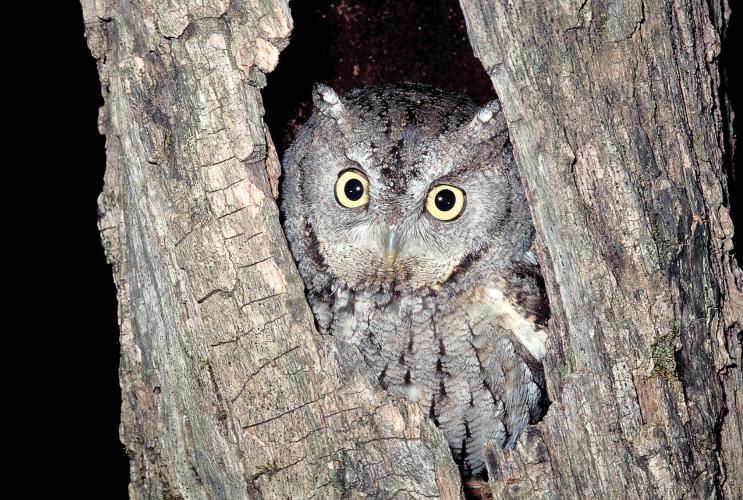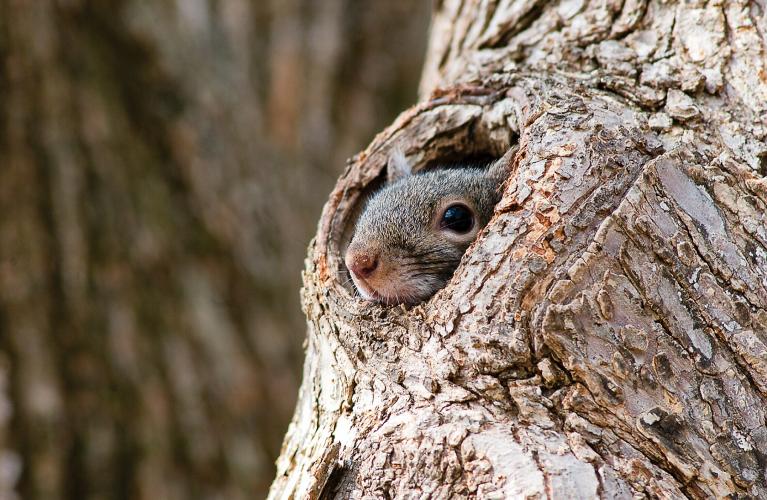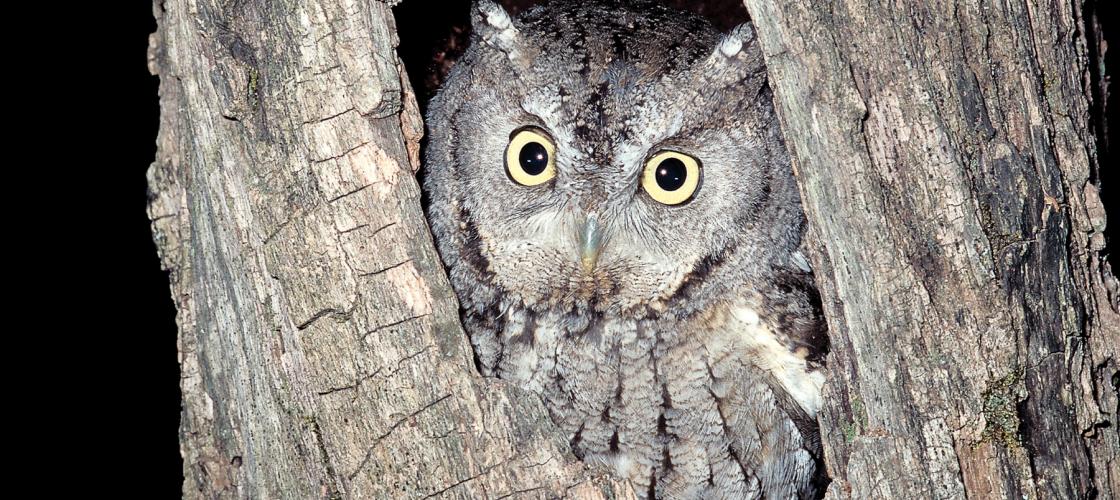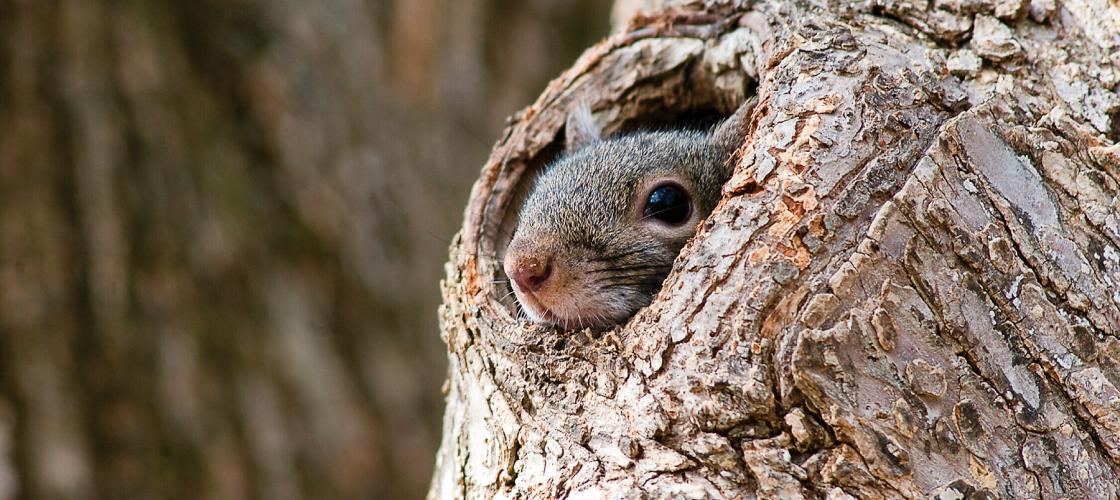Teeth and trees have something in common: They can both get cavities! Although we wisely have our cavities filled, tree cavities are wisely left just as they are.
Often, people are on the spot with chain saws whenever trees die. But removing dead trees affects wildlife. Standing dead trees, called snags, provide animals with food and shelter. Snags left within a forest provide benefits for wildlife that are unavailable in a more extensive stand of uniformly young and healthy trees. Even in towns, dead trees don’t necessarily have to be cut down. Dead branches should be removed, of course, if they present a hazard. But even leaving just the trunk provides a welcome habitat.
Woodpeckers usually move in first. They feast on insects that infest the dead wood. These carpenters of the forest build new homes, leaving old cavities vacant for new residents.
Bluebirds like old woodpecker homes. Tree swallows, bats, screech owls and flying squirrels also take up residence in old woodpecker homes.
Larger tree cavities house great horned owls, raccoons, squirrels and opossums. So, there can be a lot of life left in an old dead tree.
Snags are so important to many animals, as they are great providers of food and shelter.
Who’s There?
There are so many inhabitants of tree cavities:
- Cavity inhabitants aren’t limited to animals! Honeybees use cavities, as do carpenter ants.
- Carpenter ants build their nests in the heartwood of dead trees, logs and stumps by chewing through the interior of the tree and creating an intricate network of tunnels. Each colony contains about 2,500 workers, some males and a queen.
- Many cavity nesters need hollow trees in specific sites. Tree swallows and prothonotary warblers generally use cavities located over water. Several ducks, including wood ducks, goldeneyes, mergansers and buffleheads, use hollow trees in or near water.
- Birds use cavities to protect their eggs and young from predators. Red cockaded woodpeckers, once abundant in the Missouri Ozarks, would excavate cavities in live old pines and then create a series of smaller holes around the entrance. These smaller holes oozed pine resin, forming a sticky barrier that made it difficult for snakes to reach their nests.
- Chimney swifts and purple martins rely on artificial cavities. Chimney swifts once nested in large hollow trees, but now they nest mainly in chimneys, wells, silos and similar structures. Martins also nested in hollow trees but now generally use martin houses put up by homeowners.Information via Missouri Conservationist April 1998 issue.




Recent Posts
























